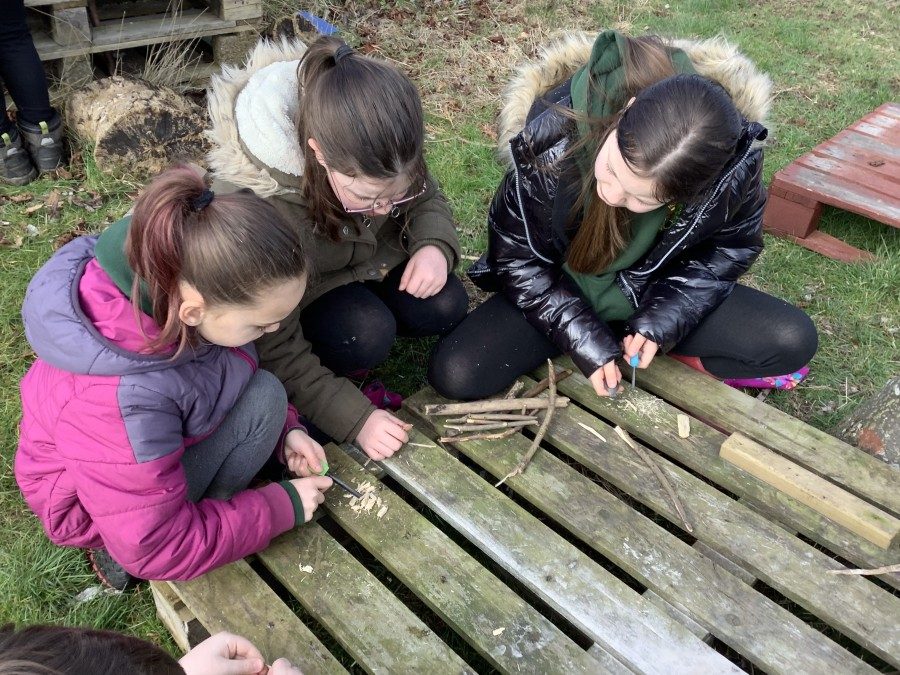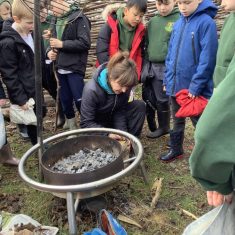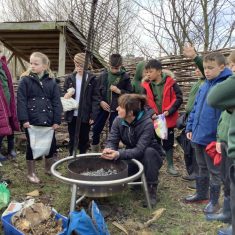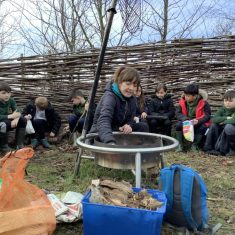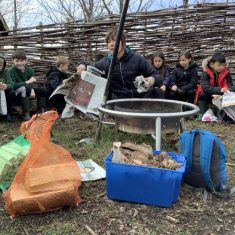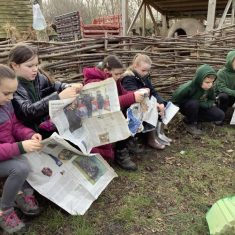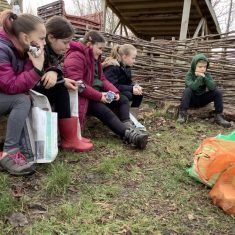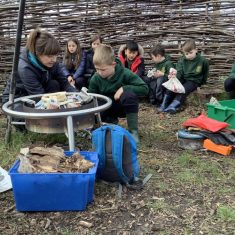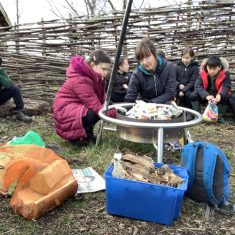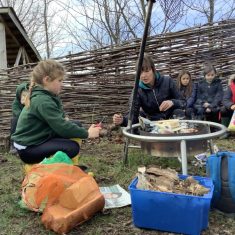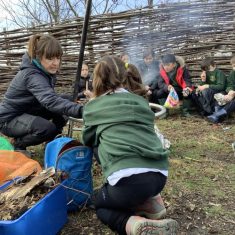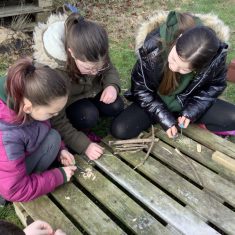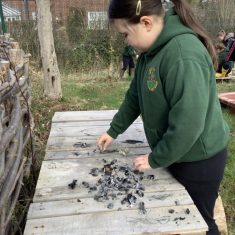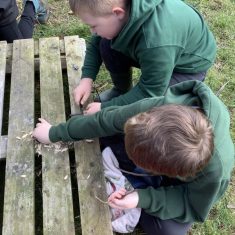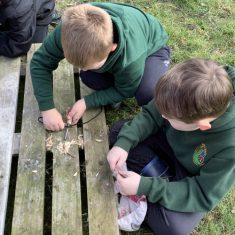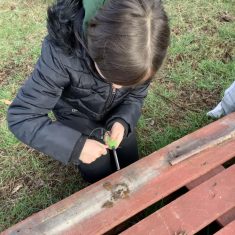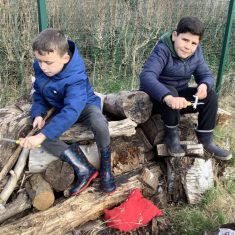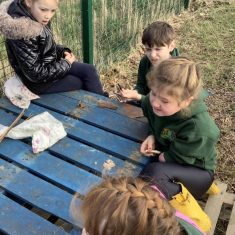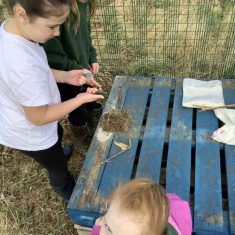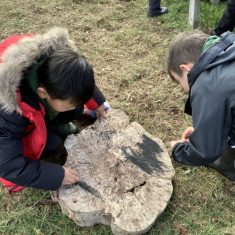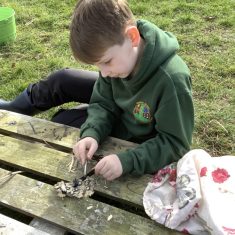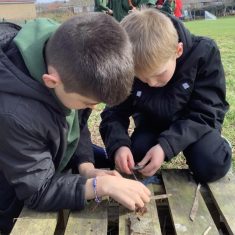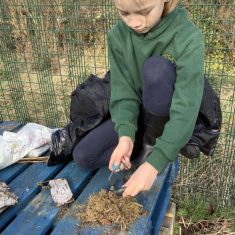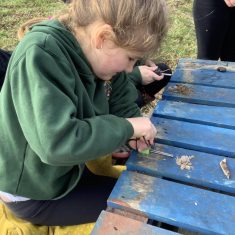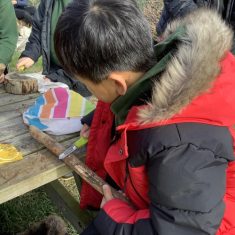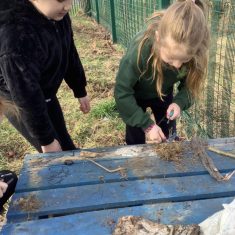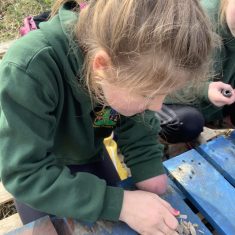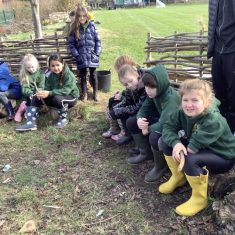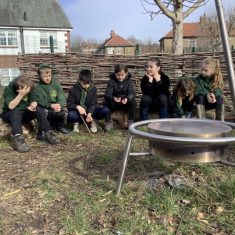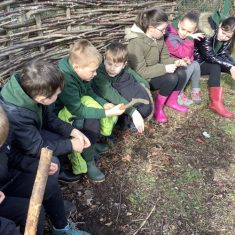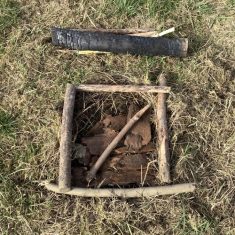Learning about fire is a important life skill. From choosing where to position a fire, to using fire pit, fire safety and methods of ignition, from fireside activities and crafts, to extinguishing it at the end of the day, the children will be taught these skills during their Forest School sessions.
Todays activity was to begin to understand what kind of natural tinder will ignite. Before they began Miss Rowe demonstrated lighting a fire pit fire. Lots of animated discussion about why we do it this way and what you might change if you wanted to cook on the fire, what materials may burn well and most importantly, what you need with you before you even consider lighting.
The children then set off to find their own natural tinder. Using flints and steels they then attempting to spark ignition. This is a hugely challenging activity, that really tests perseverance and resilience. Not easy and this was a calm, dry day. As you can see the children were absolutely focused on the task. Lots of sharing of skills and discussion.
Principle 4: Forest School offers learners the opportunity to take supported risks appropriate to the environment and to themselves.
Article 24 – We all have the right to be healthy and happy.
- Examining the fire pit. Why are there holes?
- Because the fire needs oxygen.
- For a quick camp fire we use paper as tinder.
- Loosely rolled to get maximum air flow.
- Too tight and it may go out.
- Lighting carefully.
- Using a gas lighter with push ignition.
- Now over to the children to try their hands at flint and steel.
- Charcoal makes a good base for a new fire.
- Meanwhile whittling toasting sticks is a satisfying fireside activity.
- Many hands make light work.
- Adapting technique for herself here, still managed some good sparks.
- Reflecting at the end of the session.
- What was the greatest challenge today?
- Preparations for the next stage of fire making.
